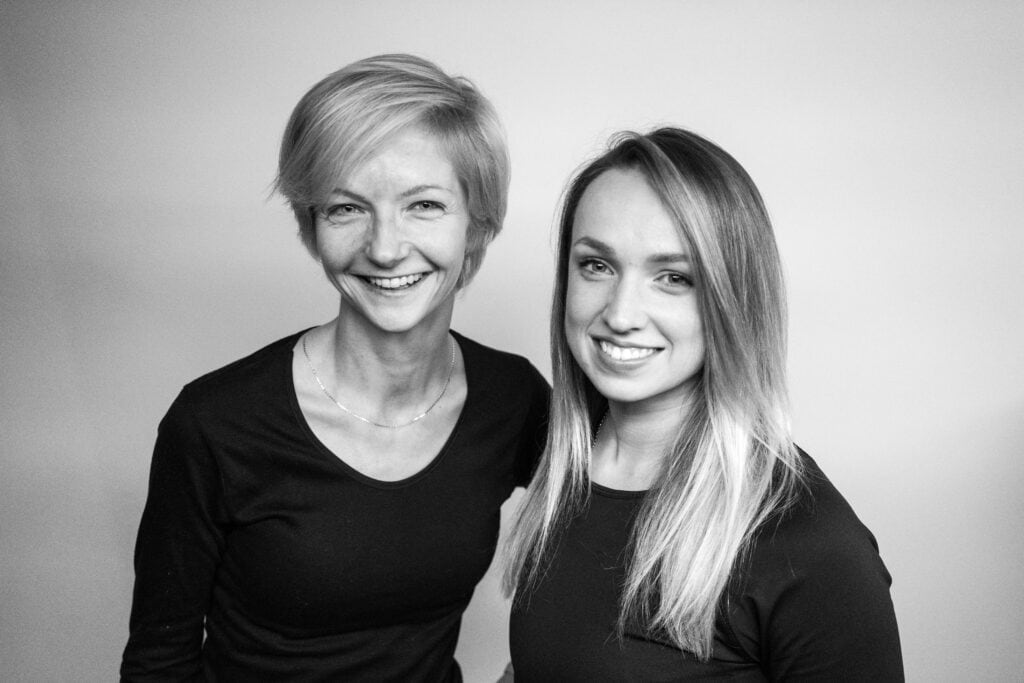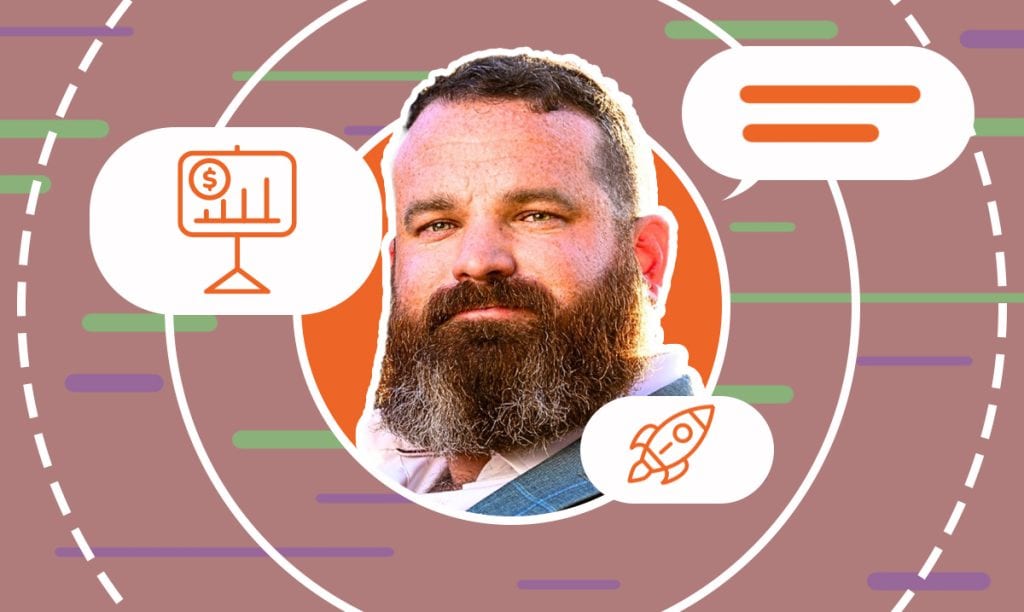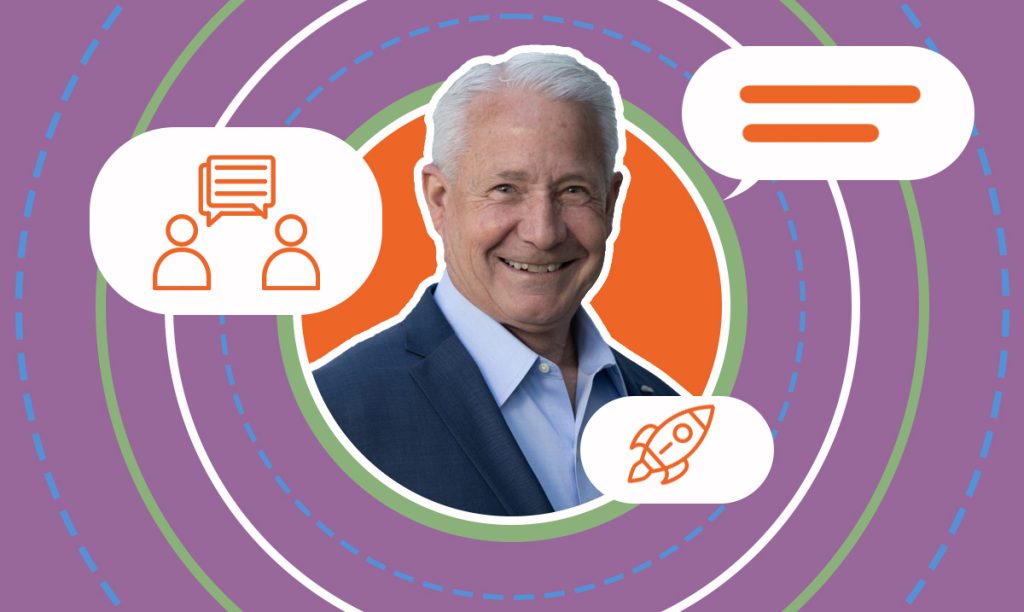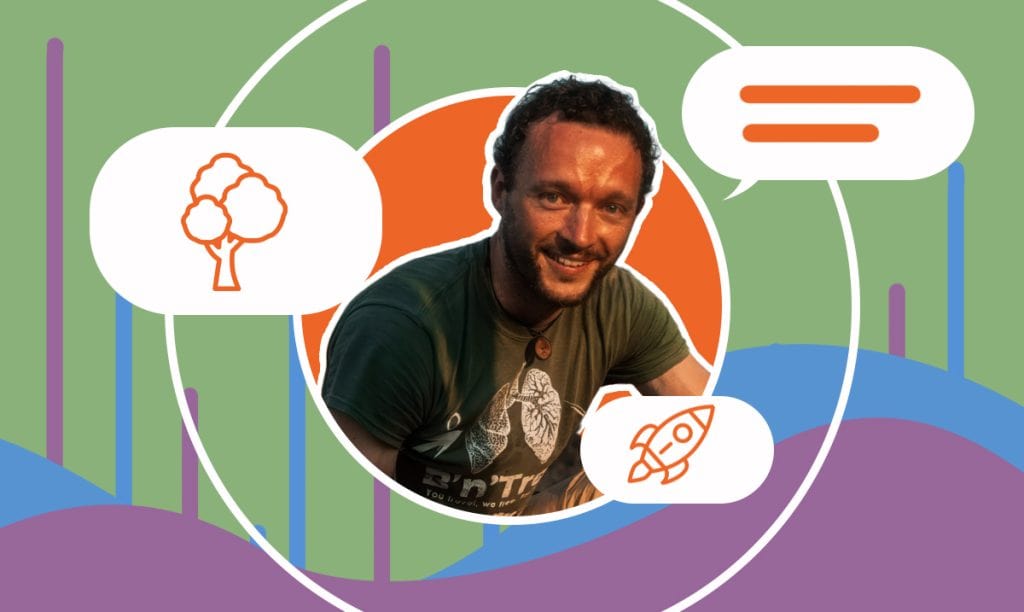In this interview, David Pere, the founder of From Military to Millionaire, shares his inspiring journey from the Marine Corps to financial freedomt ...
The Founders of Houston & Ko on Changing the Freelance Landscape
Written by: Carolyn Young
Carolyn Young is a business writer who focuses on entrepreneurial concepts and the business formation. She has over 25 years of experience in business roles, and has authored several entrepreneurship textbooks.
Published on January 11, 2024

In this interview, we sit down with Paula and Claire, the visionary founders of Houston & Ko, a unique boutique freelance platform based in Switzerland. With their rich backgrounds in major corporations like Coco-Cola and KPMG, they bring a wealth of experience to the freelance world.
Houston & Ko is not just another freelance marketplace; it’s a specialized service that connects businesses with top-tier freelancers, ensuring a perfect match for both parties. Their innovative approach is reshaping how companies think about and engage with freelance talent, offering solutions to the challenges of traditional hiring models.
Join us as we delve into their journey, explore the workings of Houston & Ko, and uncover insights that could be invaluable to entrepreneurs and business owners alike.

Shaping Vision from Corporate Experience
SBS – How did your experiences in large corporations like Coca-Cola help shape the vision of Houston & Ko?
Claire – Paula and I sometimes laugh about this. We say that sometimes we feel like our experiences in the corporate world prepared us well for business, and some days, we think they didn’t prepare us at all. But, I believe that our experience shapes our vision, and we have a good understanding of the challenges, setup, and operations of both startups and large organizations.
Sometimes, coming from purely a startup background, it can be difficult or a very steep learning curve to partner with corporate organizations with an understanding and experience of what they need, how they operate, and how their processes move. Something that this year, kind of organically, has helped us be a good, strong partner with large organizations is that we know some of those internal workings and can tailor our services and be that intermediary that helps them be both progressive and also get what they essentially need from within the organization.
Hybrid vs. Traditional & Global vs. Local
SBS – What challenges do you see the business facing with traditional hiring models, and how does Houston & Ko address this?
Paula – What we often talk about is that it’s not about comparing or seeing why one shouldn’t hire employees but should hire freelancers. We always say it’s about working together. It’s about building those hybrid teams where you have employees and freelancers and how those two parties or models basically supplement each other and can work better together.
We see many hiring managers reach out to freelancers or for our help often because the traditional hiring model is not able to support them well enough in specific situations and certain circumstances, which is about the speed of hiring.
For example, we offer a big difference in how long time it takes for you to generate a position and have someone on board. That’s very significantly shorter in the freelance market.

The other factor is the market of talent. When working with freelancers, you have access to the global market, so you get much less focused on the local market and have the whole world as a potential talent pool. It’s a lot about flexibility differences and also, of course, finding and reaching out for specialty skill sets. These are the differences that the freelance model offers you. We see it works best in combination with traditional hiring with employees.
SBS – Do you think finding talent globally is harder than in the local market?
Paula – Well, it gives the opportunities but is more challenging. When you have a bigger market, it gives a lot of opportunities that maybe the specific country cannot offer.
Impactful Success Stories
SBS – Can you share a success story where your platform significantly impacted the client’s business?
Claire – This ties in really well with what you’ve just talked about. I think there’s an expectation for businesses because they can also reach audiences all over the world. They’re not necessarily just marketing to their base location, which gives the challenge.
One of our clients had a challenge in terms of needing to increase their recognition, brand reputation, and position in the market, not just in the country where they were incorporated, but all over the world in a number of different markets.
We helped them find editorial roles so individuals have a local understanding of what topics are relevant and interesting culturally and economically. We brought those individuals from countries like Japan, Singapore, Jakarta, Mumbai, Dubai, etc.
This is an opportunity for a business to create content and conversation and engage with markets in a very local way, but it also fulfills that very commercial need to be relevant to your broader audience of individuals. We helped that business without the logistics or the time it takes to develop those (and the knowledge) internally.
We’ve got a very good model that we can apply in various markets, allowing businesses to avail of those opportunities to take their content or marketing message and translate it, not just literally but culturally, into the markets that weren’t previously addressable. That’s something we saw as a huge benefit, and we can see that it will be widely applicable to more and more businesses. As this expectation increases, businesses should be able to sell to an international audience, not just a local one.
Efficient Freelancer-Business Matching
SBS – How do you ensure a quick and effective matching process between freelancers and businesses?
Paula – The client is the center of our attention in Houston & Ko.
The whole matching process sometimes starts before the position is even generated. We work very closely with clients. We try to be their business partners and understand what the organization is about and what they are looking for. Understanding them also helps us vet for the right people. Then, of course, this tackles further processes as well.
In the matching process, we keep the client’s needs in mind. We have a quite robust and efficient process developed internally for how we do the recruitment, and we also make sure that the client has a lot of ownership at the last steps of this process. We bring them, let’s say, high-quality profiles, and in the last steps of the process, the clients make sure they hire for those particular aspects of the profile that are very important to them. That’s how we play with speed and quality.
Freelancer Vetting and Quality Assurance
SBS – What criteria do you use to vet freelancers and ensure they meet your client’s standards? How do you ensure that they are high-profile candidates?
Paula – It goes back to the previous topic. All hiring and matching is about client standards. Every client has slightly different standards. It starts very early in partnering with a client, understanding what they’re about, what they’re looking for, what’s important, and so on, and pulling all those criteria into the hiring process.
We mostly work with corporates and large organizations. Our background from those types of companies comes into play here to a large extent because we know that what startups are looking for (in terms of freelancers) versus corporates can be quite different things. A lot of stakeholder management skills are needed. There’s a lot of accountability needed. I’m not saying that’s not needed in startups, but these are super important skills, and we make sure that we hire for them as well.
We see how we exceed what clients are expecting or what positively surprises them when a freelancer joins their team. Freelancers are like small business owners. They have worked with a lot of different clients, with a lot of organizations, and potentially different industries, so they can bring this knowledge into the organization, share the best practices, and do that kind of work that often employees lack because they’ve been committed to a specific field for a much longer period. That factor goes beyond what clients have been expecting by having worked most of the time with employees before that.
Balancing Speed and Quality in Hiring
SBS – How do you balance the speed and find the best freelancers? Also, how do you balance your private life with being that speedy?
Paula – Well, I probably cannot complain. I’m coming from an extended vacation. Well, “vacation.” That’s different from corporate in that you always remain connected in one way or another. So vacation is a strange term, but let’s talk about the speed and quality.
For us, it’s important to make sure the high-quality talent is there in a speedy or timely manner. We have developed our internal processes to ensure we deliver on that promise. We work with the client to make sure we hit the specific criteria that are important for them (for example, seniority or something like that; there could be a few that differ between clients). So, we work with them on those last steps that sometimes (well, not sometimes— most of the time) take longer because there’s organizational exchange needed (certain stakeholder alignment trials and things like that).
SBS – Do you believe that sometimes the speedy companies snag the best talent? Do you think it would be better if the hiring process were longer?
Claire – Without a doubt, and I think it is something that is talked about as well. Hiring processes can be long, and historically, these have been long, drawn-out processes with multiple rounds of interviews. Driven also by recent changes in the labor market with COVID, there has been a bit of a balance shift, and there’s now a more equal playing field between talent and organizations.
It is true that organizations that are the quickest and can make those decisions will be the ones to avail of the best talent in the market. As Paula mentioned earlier, in Switzerland, we have one of the longest hiring times in Europe. Culturally, I’m not surprised whatsoever — the Swiss are thorough people.
Naturally, using a freelance model is not for every position. As we’ve said, you really can get a lot from moving faster in the market and being able to attract that top quality, where if you haven’t moved on it before, they’re going to go to your competitor. This provides a huge competitive advantage when it comes to talent attraction.
Integration Strategies for Remote Freelancers
SBS – What strategies do you employ to integrate freelancers into a company that works remotely and to that culture?
Claire – It’s a great question. As Paula says, some of it is when we leave the clients to make the final decision. Sometimes, there’s a nuance where they can see something in a candidate that they know will be a better cultural fit. What’s also as important is that we have these very in-depth human conversations at the start, which you don’t find on transactional platforms. We’re asking people about their culture and their expectations for the role.
In a way, we vet the clients and the positions that they bring us as much as we vet the freelancers to see if that’s the right role for a freelancer in the first place. We ask, “What are your expectations?” “Do you understand what it means to work together with a freelancer versus what it means to work as an employee?”
Of course, you can’t get all of that information on the first shot. We’re very hands-on throughout the process and throughout that onboarding and integration to make sure that the freelancer has what they need to be able to deliver and the client understands what it’s like to work with a freelancer.
As for the culture there, I think some clients may feel pressure to have the same culture with their internal employees and freelancers. It shouldn’t be like that, and it often isn’t. It’s more nuanced.
It’s also about partnering with clients as they integrate freelancers into their teams. As they start to build those freelance teams, we work with them to help them shape and build what that culture and setup should be, allowing them and the freelancer to get the most value from that collaboration together. So, we see that culture goes both ways between the freelancer and the client. But it’s a much more hands-on process. It’s also relieving for many clients to hear that they don’t have to replicate the culture you’ve got with somebody you see every day at the coffee machine with somebody who lives potentially on the other side of the world.
Cost-effectiveness of Houston & Ko vs. Traditional Hiring
SBS – Can you discuss the cost-effectiveness of using Houston & Ko compared to traditional hiring?
Paula – The first reason this model is very attractive is the cost and time to hire. Very often, one-quarter of the traditional hiring process is handled very effectively on our side. We take into account the knowledge of the freelance market, and we have developed these processes on our side to work with this. That is the first step.
Then, you always hear about whether it’s cheaper to work with someone freelance than with an employee once you kick off the work. We can say that clients don’t come to us to find low-paid or low-fee freelancers. That’s not something that we stand for.
We see the clients benefit from it in terms of the finance side because it gives a lot of flexibility. When the business grows and needs more support, you can ramp up the support (often hourly or whatever retainers have been agreed upon). Once the business doesn’t need that support or you have a low season, you can ramp it down. So, it gives you a lot of matching with the business needs, which the traditional business hiring model does not allow (you have fixed costs no matter what’s happening, and it’s not the case with freelancing). That’s a huge, huge benefit for both small and big companies.
Data Security in the Hiring Process
SBS – How do you ensure the data security of that hiring process for freelancers and clients?
Claire – It’s a great question, and I guess it’s a tough one, but what’s good is that there are already answers in place.
The reality is that companies that can use freelance services and integrate those as part of their staffing have such huge advantages that you can’t let your lack of process around this exclude you from that market.
From a very positive perspective, we already work with publicly listed large organizations that have huge levels of responsibility and accountability when it comes to data security, and they already have processes in place that allow freelancers to integrate as part of their workforce — while keeping some of those security measures and access measures. They’re working together with their IT, legal, and security teams to have that in place so that they can take care of both concerns — the kind of competitive advantage that comes with talent whilst also making sure that they fulfill their obligations on the data security side.
Remaining Competitive in the Freelance Hiring Market
SBS – How do you stay competitive in this massive market or hiring process?
Paula – Most things we do with Claire in the business are not discussing competing and seeing how we can do better than this and if we can copy someone. We’re less focused on that.
What we are focusing on is client needs. The client is at the center of everything we do, so we’re focusing on what the client needs, what is not there, and what gaps are in the current services.
There is a place for many different models of freelance platforms and freelance support. There is a place for transactional freelance platforms. There is a strong position for employment and stuff like that. It’s about complementing all these different services, understanding where the client needs, and filling that gap.
I think that’s the key motivation — just listening to them, collaborating with them, and developing our solution to address those needs.
Claire – Yeah, and there are different ways to be competitive. One way is to look and see what everybody else is doing exactly. Can we best that? Or there’s a different approach to being competitive, which Paula explains — where we just stay really close to our clients.
We’re curious. We wonder what pain points they come across that somebody else hasn’t solved yet. Is that something that we can support them with? So, competitiveness can come from looking at others and obsessing about what they’re doing.
Future of Freelancing Amid AI Advancements
SBS – What do you believe is the future for freelancers, especially now with AI?
Claire – You’re definitely going to get a biased answer from us. So I’ll say that at the start. Still, I think we’re not naive enough to say that the market is at a level of maturity where we think executive boards are sitting around the table talking about the total staffing strategy and where they get that talent from. We don’t think the market is there yet in terms of maturity, or the concept is there in terms of maturity.
We see pockets of senior individuals with autonomy in building their teams adopting this model. So, rather than seeing this come from the top, we see that this idea, concept, and model are seeding within these large organizations.
For example, we work a lot with chief communication officers. I don’t know why we found them to be particularly progressive or well-suited to the model, but of course, when they test this model, they partner with us and create such a strong team. You see that their peers within the organization look to them to say, “What are you doing? How have you done that? Talk to me about it?” and it starts to grow.
As I say, we’re biased, but I’m sure and confident that it will reach that threshold where organizations understand that it has grown big enough within the organization and is worth the time to be addressed.
Advice for Entrepreneurs Starting Similar Companies
SBS – What advice would you give people who want to start a similar company to yours?
Paula – I guess two things. For people who want to start working with freelancers, we always say, “Go for it, go for it, try!” There are no fixed costs involved. There are very few risks. The only risk is your time to hire and find someone. So that’s a perfect thing for trial and error, to see whether it works. For people who are starting business freelance platforms themselves… well, I think we can do another session on that one.
Claire – This is maybe like a part of what we talked about at the start, which is providing this practical view on what it’s like to have a business. The road is bumpy. We’ve been on the bumpy road for the last five years, and it’s as bumpy today as it was on day one. They’re different types of bumps. Hopefully, and ideally, they’re not the same ones, but the processes we have developed and everything that we’ve talked about didn’t land in our laps. We didn’t have them. Some of them we’ve had two years. Some of them we’ve had two days. Some of them we’ve had two weeks… But the process itself is touchy-feely. It’s hands-on; it’s intense!
Subscribe to Our Newsletter
and gain insider access to cutting-edge business insights and trends.
Featured Resources

How David Pere Helps Veterans Achieve Financial Freedom
Published on April 3, 2025
Read Now

Empowering Entrepreneurs with a Consultative Banking Model
Published on January 23, 2025
When it comes to business banking, a one-size-fits-all approach doesn’t cut it — just ask Endeavor Bank. Since its founding in 2017, EndeavorBan ...
Read Now

How Click A Tree Makes Sustainability Simple for Businesses
Published on January 20, 2025
In this interview, Chris Kaiser, the founder and CEO of Click A Tree, shares his journey of creating a company dedicated to making sustainabilityacc ...
Read Now
Comments